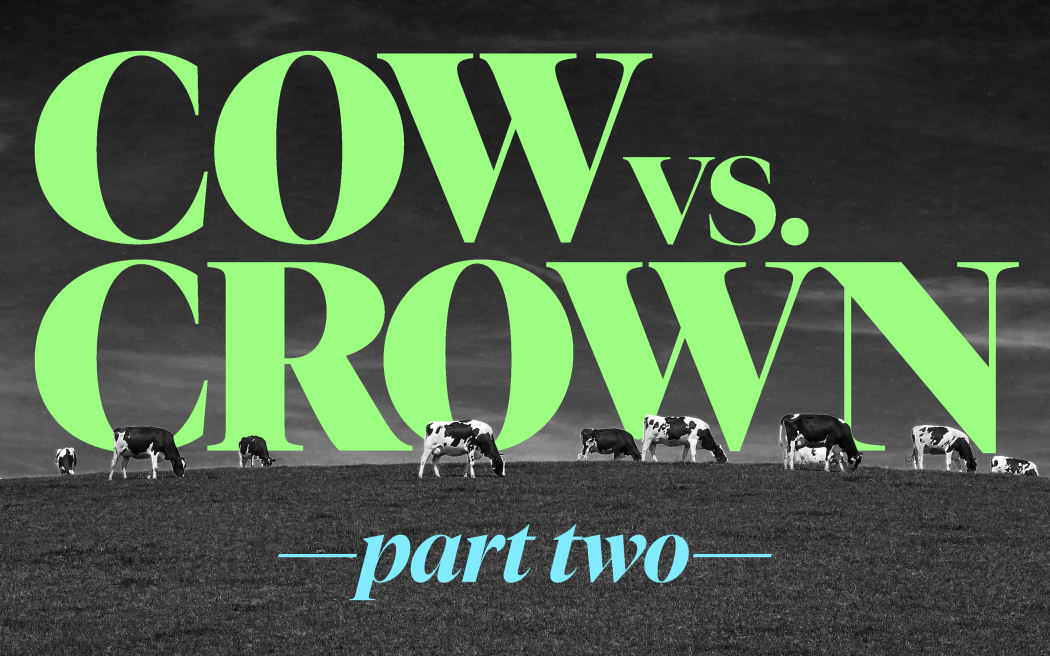Agriculture contributes more to global warming than any other industry in Aotearoa. Yet attempts to rein in the sector’s emissions have fallen short once more. In Depth reporter Kirsty Johnston investigates how a “world-leading plan” was born, and how it died. This is part two: Devil in the Detail. How agriculture and government fell out, and the climate lost.
It took nearly three years before cracks in the shiny veneer of the Labour government’s partnership with the agriculture industry on climate change began to appear, and then just three months for the plan to crumble almost completely.
The ‘He Waka Eke Noa’ deal had been launched as an “historic consensus” by Prime Minister Jacinda Ardern in late 2019, where the two parties would stand “shoulder-to-shoulder” on a programme to reduce emissions.
“For too long politicians have passed the buck and caused uncertainty for everyone while the need for climate action was clear,” Ardern said.
The “world leading” plan was that industry, with help from government agencies, would draw up a system to price and reduce agriculture’s climate pollution - the greenhouse gases created from farming cows, sheep and deer, which make up half of all New Zealand’s planet-warming emissions.
In those first years, it had seemed like the two parties were making progress, despite the huge task before them. Industry representatives spent hours on Zoom or in boardrooms with officials, trialing options and modelling impacts, trying to find the best solution. And by mid-2022, industry had launched its plan.
But to the industry’s apparent surprise, ministers didn’t immediately accept their proposal. Soon, there were two competing plans, with industry distancing itself from the government version. By December, most of the farming industry had reneged on at least part of their commitment, and were urging everyday farmers to follow their lead and submit against the proposal they had helped create.
In short: the love affair was over. But what killed the consensus? If the proposal came from a partnership, why were politicians so unhappy with the result? And more importantly - what about the climate?
This RNZ investigation uses background interviews with industry insiders, officials, and experts, as well as documents obtained under the Official Information Act, such as cabinet papers, government reports and ministers’ diary entries to tell the inside story of how a once-promising idea fell apart. You are reading part two - you can go back to part one here.
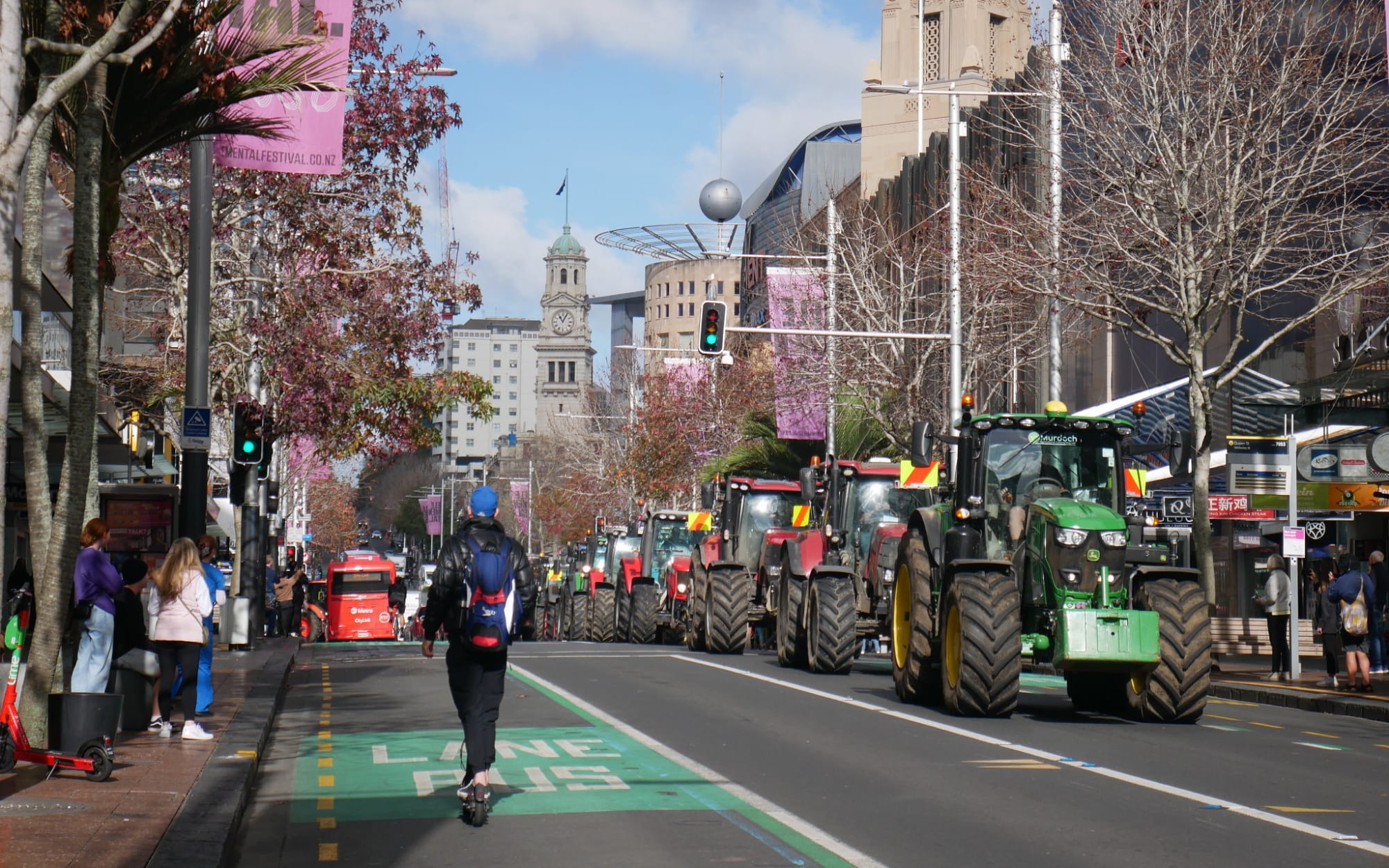
A protest convey of the Groundswell group, moving through central Auckland in July 2021. Photo: Newsroom / Matthew Scott
The task before the He Waka Eke Noa partnership was never going to be easy. The 11 industries involved were extremely diverse: from beekeepers to deer farmers; horticulture to dairy; beef, lamb, Māori agriculture, and then the government officials.
The group had two main tasks. First, they had to upskill farmers, and rapidly. At that point, in early 2020, very few farmers knew their farms greenhouse gas emissions, with most underestimating farming’s pollution by half. Secondly, they had to find a way to price emissions that would be agreeable to everyone. By far the most difficult part, the partnership believed, was the pricing element.
The rationale behind a pricing system for emissions is simple: if polluters have to pay for the cost of their emissions, emissions will reduce, because every tonne of emission reduced is one they don’t have to pay for. Ideally, because pricing rewards those who take positive action, it would also encourage innovation.
Most emissions pricing policies are made of two parts: First, the price for the pollution, and second the mitigation against that price, like a discount. In this case, that discount would likely be in the form of “free allocation” of pollution, which would help farmers and rural communities adjust to the increased costs imposed on them, and to aid the transition to low-emissions agriculture. Because the initial discount was set at 95 percent, by the coalition agreement, agriculture would only pay for 5 percent of the gases it emitted.
The partnership had a raft of choices to make. They already knew they wanted the price to apply at individual farm level, so farmers had more control over their emissions. They wanted a split gas levy - so that methane had a separate price from nitrous oxide and carbon. And in terms of mitigation, they wanted not only to provide financial assistance via free allocation, but practical assistance to help farmers transition, such as upskilling, or access to low-emissions technology.
The difficulty came in trying to distribute the free allocation at a farm-level in a way that was fair, but also achieved the emissions reductions required. There were multiple methods considered by the partnership, all which posed their own particular problems.
For example, one method, known as “grandparenting”, saw free allocation determined by a farmer’s historic emissions level. Farmers would individually get their 95% free allocation based on that level, meaning if they reduced emissions subsequently, they could save or even make money. But the partnership didn’t like that method, as they felt it penalised those who had already made emissions gains, while rewarding polluters.
Another example, recommended by the Climate Change Commission, had two similar systems called “output-based allocation” and “land-based allocation”. In an output-based system, a farm’s allocation would be based on its annual output, for example of milk solids for dairy, or stock numbers for drystock farming. If the farm’s output was above the average amount of emissions for that “output”, the farmer would pay a levy. If it was below, it would receive a rebate, encouraging emissions efficiency. Similarly with a land-based system, if a farmer’s emissions were above or below the average for their land’s “productive capacity” per hectare, they would be either penalised or rewarded. Both systems put pressure on high-emitting farmers to reduce emissions, or face financial consequences.
The partnership’s problem with the output and land-based methods, however, was that each one favoured a particular sector. Generally, land-based allocation would benefit farms with lower stocking rates and lower emissions per hectare, like sheep and beef farms. Output-based favoured the more intensive systems used by dairy.
Inside the steering group’s room, the committee members went around and around on which one would be better, commissioning modelling and charting impacts, then taking updates back to their industry groups, who would inevitably push back if their particular sector was at a disadvantage. In the end, even though some of the partners wanted the land-based or output-based options, the argument came down to a struggle between the two loudest voices: the dairy industry and the meat industry, who simply would not agree to a scheme that left their members worse off.
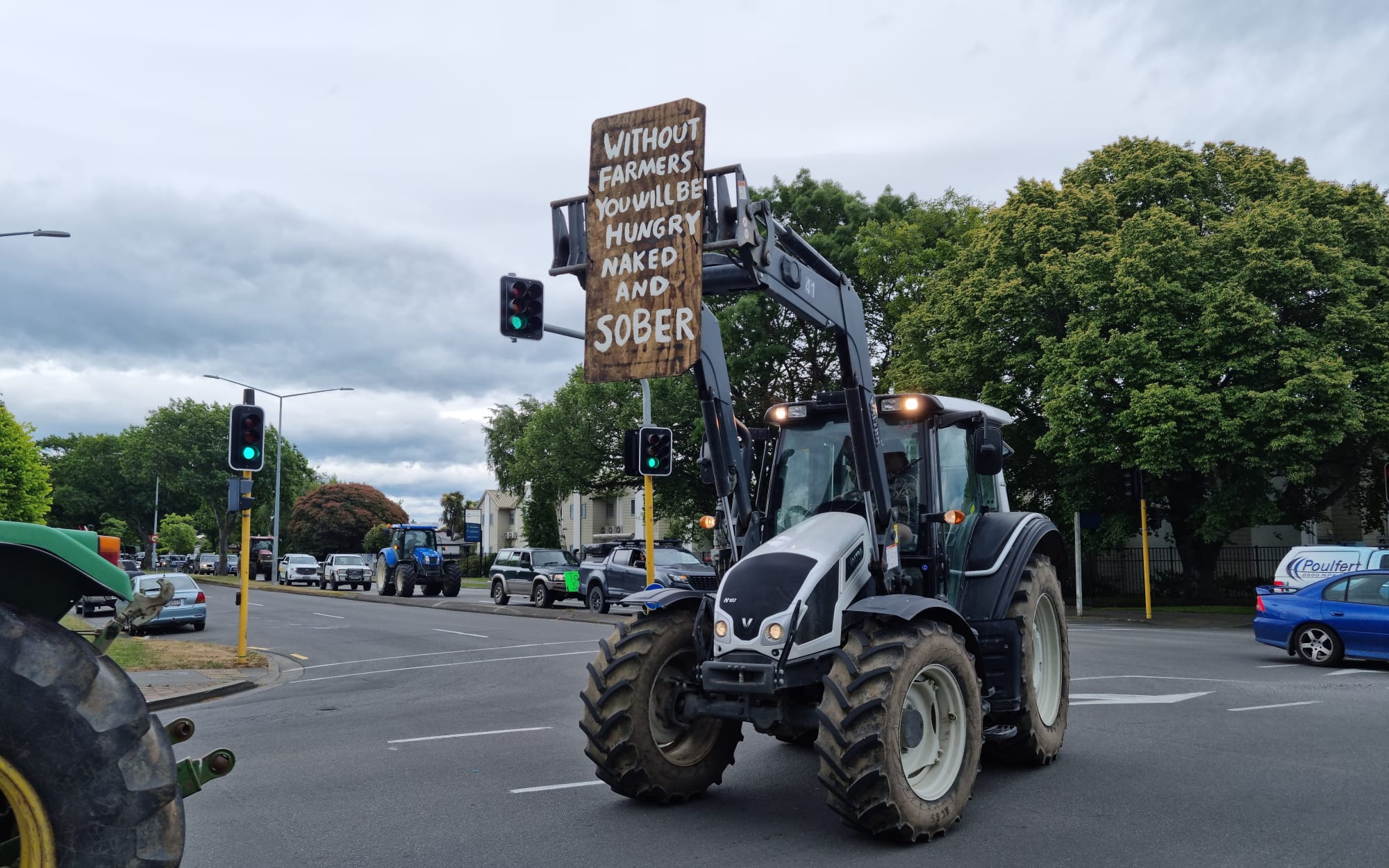
Groundswell protestors on the streets of Christchurch Photo: RNZ / Conan Young
While the partners were locked away discussing their plans, the mood outside was changing, rapidly. A newly-formed farming lobby group named Groundswell began to organise protests over what they saw as various “attacks” on farmers by the government, including new freshwater rules, the so-called “ute tax”, and of course, climate regulation. “The unworkable elements of climate-change policy which are crucifying farmers and growers must be withdrawn,” Groundswell declared. The growing disquiet saw hundreds of tractors and trucks descend on the country’s main cities, with furious farmers waving signs proclaiming “No Farms No Food” and “Change The Politics, Not The Climate.”
The partnership released its draft report into this seething melee, in November 2021. The document revealed that the group had never managed to agree on an allocation policy. Instead, the partnership had put aside a traditional rebate scheme and settled on something else entirely: a proportional discount, where the levy amount itself was simply discounted by 95% at each farm, no matter what reductions a farmer made.
At the price rate the partnership suggested, 11c/kg methane, farmers would pay anywhere from 1.4 per cent to 6.0 percent of their operating profit in levies, with some farm types hit harder than others. For example, while an average Waikato dairy farmer would pay $6195 a year, a Canterbury dairy farmer would pay $12,966. A South Island hill country sheep farmer would pay $11,195.
To help offset those costs, and to boost emissions reductions, the partnership had thrown in some sweeteners. If farmers lowered emissions, either by growing vegetation to absorb carbon (a process known as sequestration), or by using certain emissions reduction technologies, they would be paid for their emissions savings - at a rate up to ten times the amount of the levy. With such generous terms, some farmers would be able to offset their entire emissions bill, or even be paid a credit. The incentives were to be paid from the levy money raised, meaning all revenue was recycled back into agriculture, and didn’t end up in the government coffers.
HWEN programme director Kelly Forster called the draft a “huge milestone”, forged in challenging circumstances. “You’ve got very diverse views sitting on that group,” Forster told Newsroom.
Critics did not agree, saying the plan was a waste of time.
"He Waka Eke Noa had one job, to come up with an emissions reduction plan for agriculture that would cut emissions. They have completely failed,” said Forest & Bird Climate Advocate Geoff Keey.
Environmentalists made two points. First, they said, the low methane price meant farmers remained insulated from the cost of their pollution. And secondly, although the government's new methane targets required a 10% reduction by 2030, the partnership’s modelling showed that its pricing system would reduce emissions by less than 1% from 2017 levels. Any further reduction relied on technology that had not yet been proven at scale. It was an outcome the Interim Climate Change Commission (ICCC) had warned against in its earlier report, saying that a proportional discount “would not retain the full incentive to reduce emissions that is required to reach the desired outcomes.” It appeared that in their drive for consensus and fairness, the partnership had foregone the entire point of the exercise: to combat global warming.
Climate Change Minister James Shaw openly expressed his own disappointment. “There is clearly more work to be done on those proposals before final decisions in March,” Shaw said. (Shaw was in fact so unhappy that he asked the partnership to go back and re-visit an option initially suggested by the ICCC - a hard limit on the total emissions, also known as a cap. But the partnership again discarded the idea, saying it was too complex.)
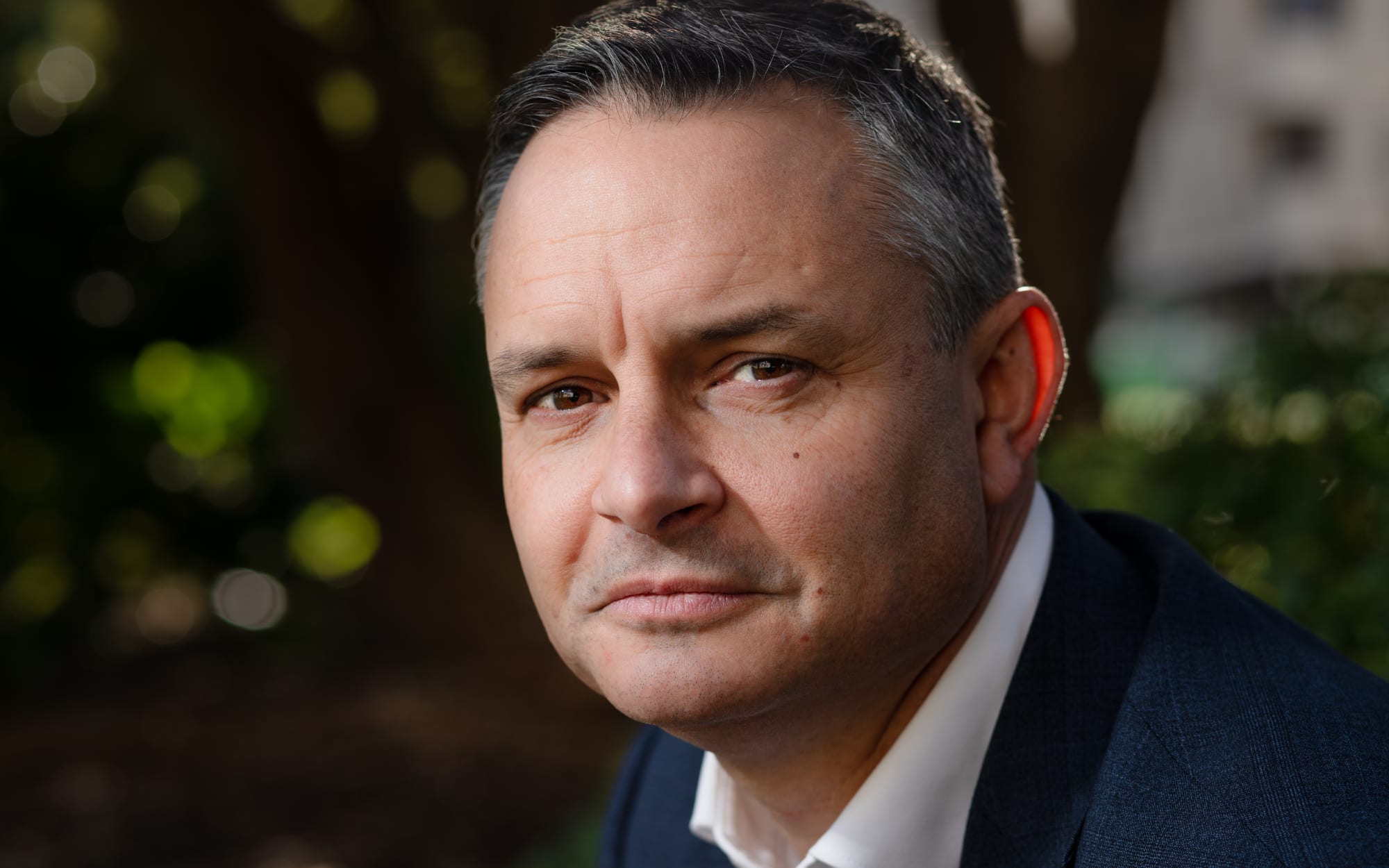
James Shaw Photo: RNZ / Cole Eastham-Farrelly
In early 2022, the partnership began a consultation tour. While some meetings were held locally, most were forced online due to Covid-19, alienating many already-disgruntled farmers further. Groundswell added to the sense of agitation, accusing the partnership members of being the government’s “pet lobby groups”. But the partnership and its supporters remained adamant: farmers should get on board, because their option was better than being subject to the Emissions Trading Scheme (ETS).
In June, the final He Waka Eke Noa partnership proposal was released. This time, the partnership anticipated the blowback on its emissions reductions, and presented a calculation showing their proposal would cut methane by 4-5.5% from 2017 levels by 2030. When added to contributions from the waste sector and freshwater regulators, that meant it would achieve the 10% target in the Zero Carbon act by 2030. Meanwhile, nitrous oxide output would drop by between 2.9 and 3.2% by the end of the decade.
The figures made for a shiny headline, but modelling released with the report revealed the predictions still relied heavily on unproven technology that might not work in New Zealand. Modelling showed once those kinds of forecast technology improvements were taken out, the levy itself would only achieve a 0.8% emissions reduction by 2030.
A week after the proposal was made public, officials drafted a briefing with their initial feedback for ministers. The plan had some flaws, they said, the first one being the methane price wasn’t high enough to force change. It was also expensive - more than $100 million a year to implement - and a high burden on farmers.
The aspect of the plan that caused most immediate concern, however, was sequestration. The sequestration payments were the partnership’s solution to a difficult problem: its scheme would otherwise be inequitable, placing a much higher burden on sheep and beef farmers. Unlike dairy, the dry stock sector was less likely to have cost-effective mitigation technology that would help them avoid the cost of the levy. (Sheep and beef are also less profitable generally, whereas dairying can be more lucrative). On the other hand, however, many dry stock farms had large tracts of native bush, or scrappy land that they could plant out if they were allowed to claim credit for them. The officials’ dilemma, however, was that the sequestration payments created another kind of equity issue. It would mean farmers were being paid for vegetation, such as long-established native bush, riparian planting and shelterbelts, where other, non-farming landowners such as council or iwi were not. There was also a question over how much carbon would actually be removed from the climate from small patches of trees, and whether that would officially count towards New Zealand’s emissions targets. Plus, sequestration was already part of the ETS. Because of the complexity, officials recommended deferring the inclusion of sequestration, or risk missing the 2025 target.
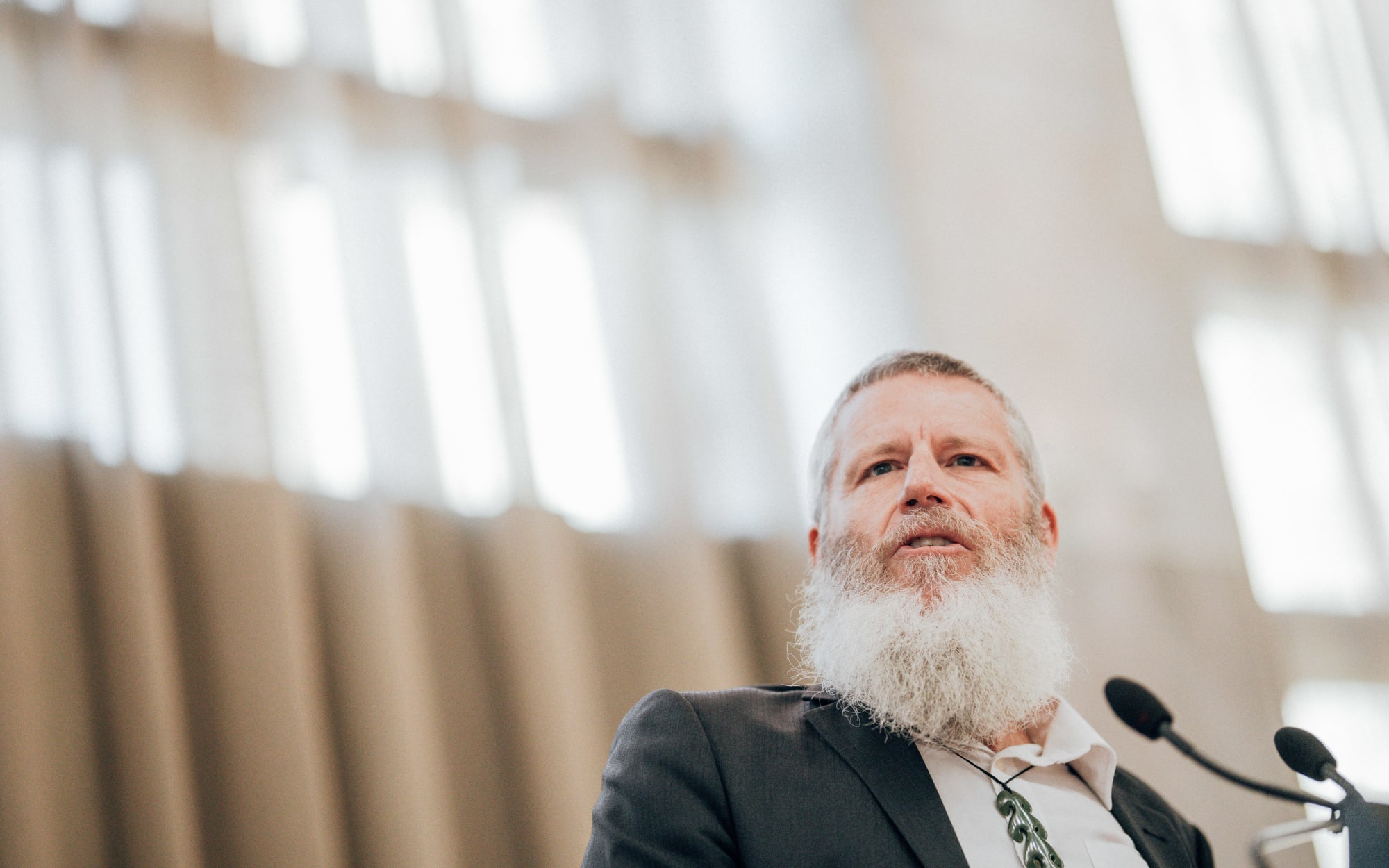
Climate Change Commission chair Rod Carr Photo: RNZ / Dom Thomas
In its advice in late June, the Climate Change Commission recommended that if the plan was to go ahead the Government make “several substantive changes”. Sequestration was one of those. It should not be part of the pricing model, but instead the government should begin work on a separate system that recognised vegetation that was not currently included in the ETS, the commission said. There also needed to be more consultation with Māori, as their farms - many in sheep and beef - would be affected. The commission also recommended that fertiliser should go into the ETS, not the farm-level system.
As the proposal stood it would be “infeasible to implement” by 2025, as neither the government nor the farming sector was prepared enough for the level of detailed emissions capture it required, the commission said. But it warned against delaying pricing. Instead, it recommended starting with a basic farm-level levy and continuing to develop the pricing system further - particularly so that it could enable emissions prices to increase, as in a more traditional marginal pricing system. Using revenue to fund mitigation was a good first step, it said, “but we do not consider this will be an effective and enduring model in the long term to meet targets.” It said a pricing system using an output-based or other allocation model, should be “rapidly pursued.”
The commission’s advice caused an obvious headache for officials. They were on deadline, and timelines were clearly too tight to come up with a second system. In a briefing from Ministry for Primary Industries (MPI) staff to Agriculture Minister Damien O’Connor, officials pointed out that while the commission preferred an allocation system, it hadn’t given any practical solutions for how to do that, or how to transition from one system to another. Officials instead advised ministers that they supported the partnership's proposal to use recycled revenue to incentivise emissions reductions.
Over the next three months, ministers and the officials worked at making the He Waka Eke Noa proposal “more credible and workable”. One major issue was deciding how the methane price was set. In their proposal, the partners wanted methane prices to have a three-year price-ceiling of 11c/kg methane to “earn farmers trust”. Officials disagreed with that cap, saying it might “constrain the ability of the pricing system to drive emission reductions”. The partners also wanted input on methane prices in the future, by way of an oversight board, made up of sector members, who gave advice to ministers on the levy rate. Officials said that process lacked independence and transparency, opening the door for “constant debate” (read: lobbying) on the levy price. The Treasury, when it gave advice on the plan, held the same concerns. "The governance approach proposed by the partnership may risk regulatory capture, given their recommendations to have industry representatives on a governing board responsible for recommending levy prices,” it said.
The Treasury’s report strongly advised against the He Waka Eke Noa scheme as a whole. It was not based on sound economic principles, it said. The Treasury too was concerned that the pricing system would not actually lower emissions. It recommended, rather than using generous payments for emissions reductions, that the government should impose a higher levy price and then, if there was evidence of hardship, provide targeted financial support to affected farms. But, officials said, the government should not intervene to prevent every single farm from failing.
"We expect to see structural change across land-based primary industries because of pricing, given the historic lack of incentives addressing the sector’s emissions and the implicit subsidy that it has received to date. In some places there are likely to be existing land uses that are no longer viable when facing the full costs of their production,” said Treasury.
In September, the government’s proposed version of the He Waka Eke Noa plan went to Cabinet for approval. The paper revealed that - just like with the partners’ model - the two most powerful people tasked with designing the government’s system had been unable to agree. While Agriculture Minister Damien O’Connor supported an amended version of the farm-level pricing system, Climate Change Minister James Shaw did not. He still had concerns regarding “uncapped emissions, a low marginal price, and the risk of emissions reduction targets being traded off against other considerations when prices are set.” Shaw instead recommended his preferred version: a cap and trade system.
Once again, Shaw’s proposal was rejected by Labour ministers.
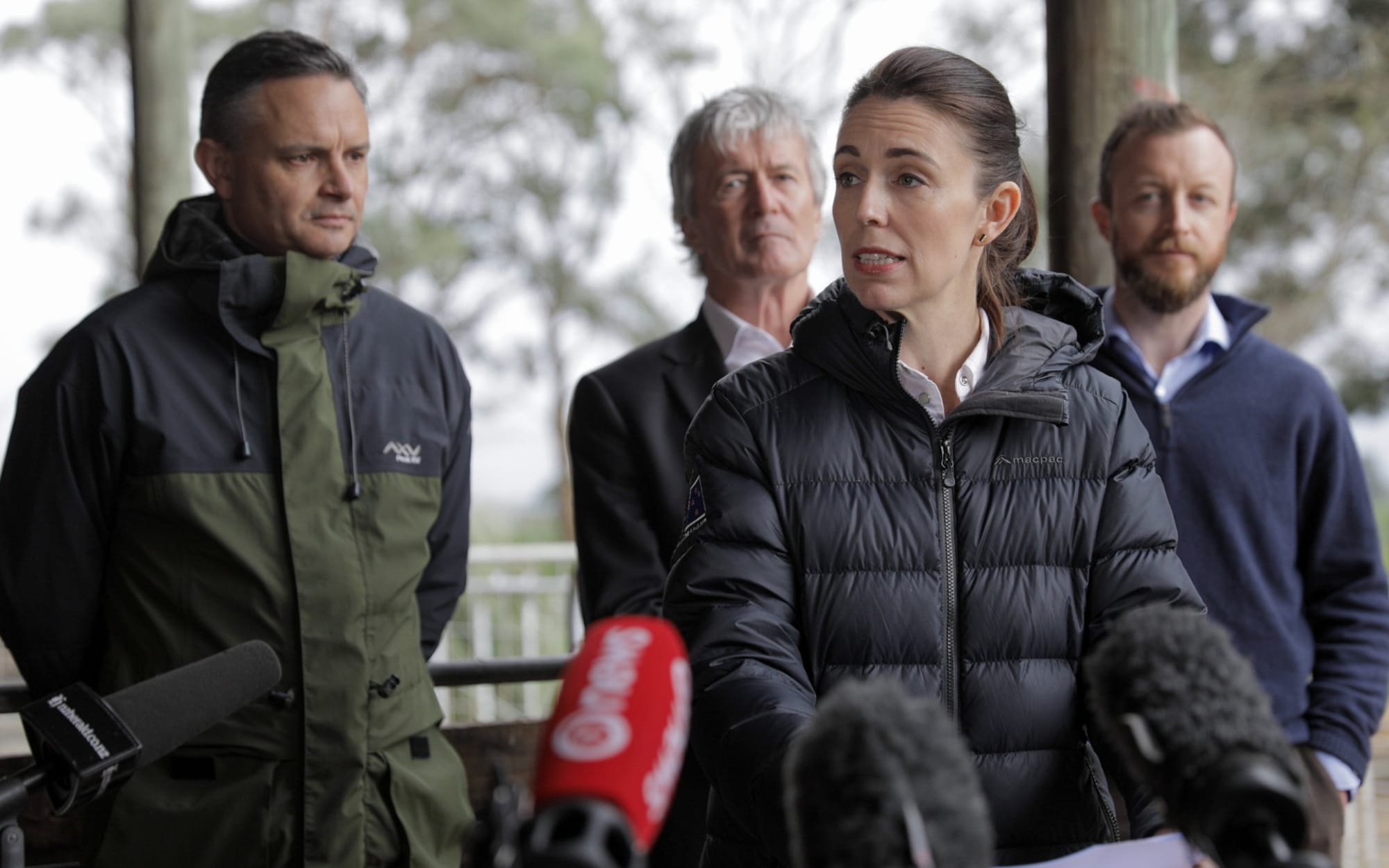
Climate Change Minister and Green Party co-leader James Shaw (left), with Labour's Agriculture Minister Damien O'Connor, then-Prime Minister Jacinda Ardern and MP for Wairarapa Kieran McAnulty at the announcement of a proposed agricultural emissions pricing scheme in October 2022. Photo: RNZ / Angus Dreaver
On 11 October 2022, Jacinda Ardern donned a new pair of gumboots and travelled to the Wairarapa. At a local dairy farm, surrounded by cameras, she announced the government’s proposed pricing scheme, alongside an extra $485 million in subsidies to help agriculture reduce its emissions.
The plan the government proposed was largely identical to that put forward by industry, except for changes to the sequestration policy, and the way the levy price was set. In the government version, sequestration would be recognised, but through a separate system, with only riparian planting and indigenous vegetation to be included from 2025. In the long term, Cabinet agreed to consult on working towards including new categories of vegetation in the ETS. Meanwhile, the sector’s plan to help set the levy price was wholly rejected. Instead, the price would be tied to emissions reductions targets, and would likely start around 11c/kg methane.
“This is a pragmatic solution that helps us meet our targets, be the first in the world to do so and can be implemented quickly,” Ardern said, in launching the proposal. “All of those things are material if New Zealand is to start making a difference on its agricultural emissions reductions.”
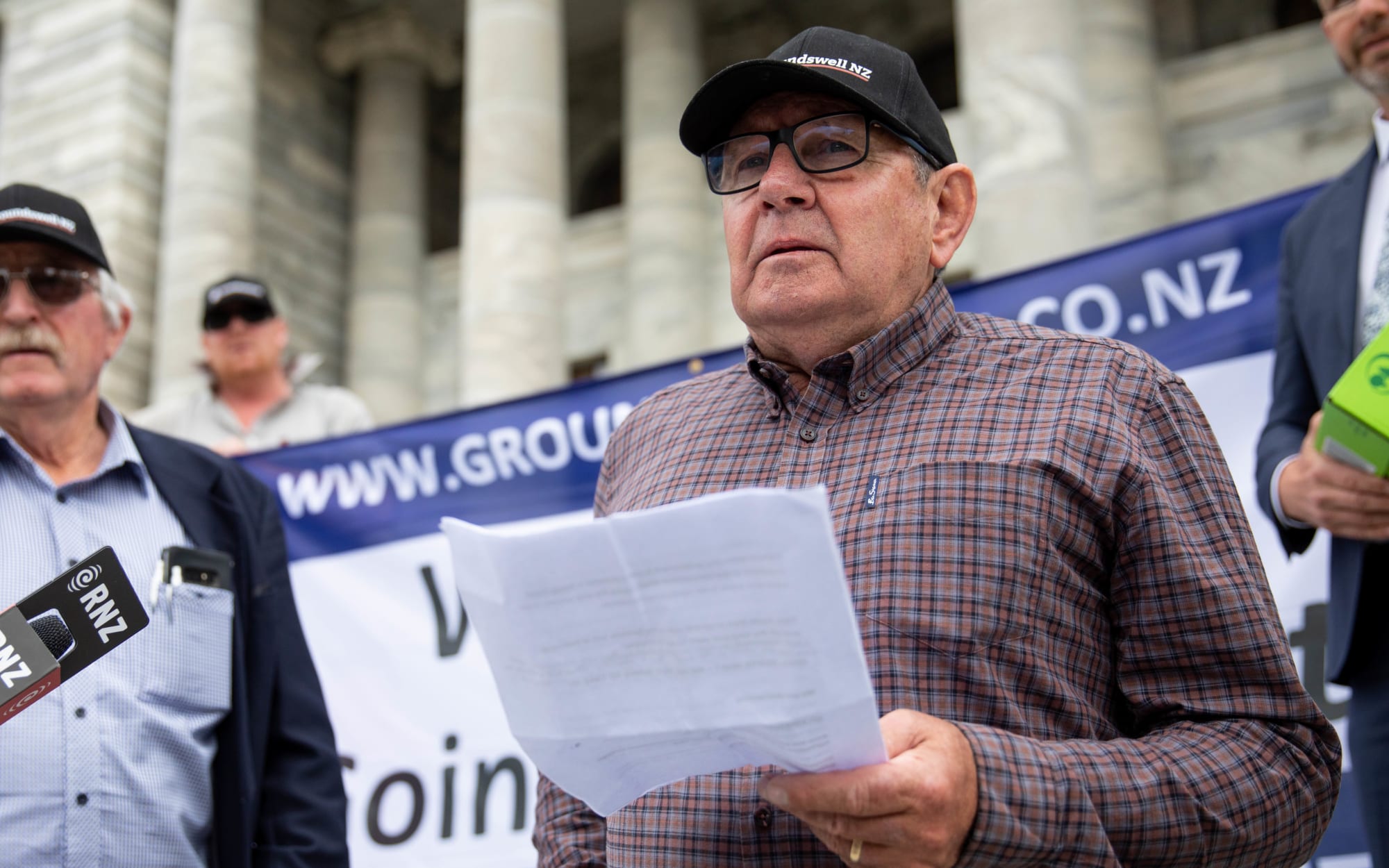
Bryce McKenzie of Groundswell Photo: RNZ / Angus Dreaver
The backlash from the farming sector was brutal. Groundswell’s Bryce McKenzie called the plan an "assault on food production and rural communities". Beef+Lamb NZ chair Andrew Morrison was more measured, saying he supported the bulk of the proposal but the changes to the sequestration policy, which meant smaller lots of trees would not attract a reward, was unfair. Federated Farmers president Andrew Hoggard said the proposal was disappointing. "We didn't sign up for this. It's gut-wrenching to think we now have this proposal from the government which rips the heart out of the work we did.”
Hoggard had attended an advance briefing on the government proposal ten days earlier. He’d picked out some key figures: modelling commissioned by the government showed no matter how the pricing system was designed, meat and dairy farming would be negatively impacted by emissions pricing: profits would drop, some farmers would switch to horticulture, plant trees or sell up to foresters. But some scenarios were worse than others. The partnership’s proposal, for example, saw sheep and beef farmland shrink by at least 8%. But under the system proposed by the government, there would be a roughly 21% reduction in lamb and wool, and a 36% drop in beef, the modelling found. The impact on dairy was much lower, with a 5% drop in milk solids.
“Say Goodbye Small Town New Zealand,” Hoggard wrote in a Federated Farmers press release. "Our plan was to keep farmers farming. Now they’ll be selling up so fast you won’t even hear the dogs barking on the back of the ute as they drive off.”
The irony to the public backlash was that government modelling had found that with land use change included, even considering the very low methane price, it would be enough to meet New Zealand’s emissions goals. Methane emissions would drop 15%, and nitrous oxide would fall by nearly 13% by 2030. However, that benefit wasn’t one of Federated Farmers talking points. Instead, the debate switched to a new narrative about the government causing “emissions leakage” - where other countries who were less emissions efficient would fill the gap caused by New Zealand’s drop in production, meaning international emissions could actually increase as a result of the policy. This was picked up as a talking point by Dairy NZ, and subsequently the National Party.
National pointed to modelling which estimated as much as 65 percent of reductions here could be "leaked" by countries offshore. O’Connor was quick to push back, saying the figures in the report were “assumptions.” Other commentators raised the spectre of leakage as a false flag, citing the Climate Commission report, which found multiple analyses could not agree on how much leakage there would be, because the international landscape was changing so rapidly.
In early November 2022, the leaders of Federated Farmers, Beef+LambNZ and Dairy NZ announced to farmers that they had decided to pull their support for the government’s methane reduction target of 10 percent by 2030. Shortly afterwards, the full He Waka Eke Noa partnership issued a submission on the government’s plan, recommending it change its pricing proposal back to the original version, except this time with an even lower levy rate, of 5c/kg of methane, with no increase for five years. Federated Farmers’ own submission went further, saying it would only support a pricing system if methane targets were based on “no additional warming”, and if no leakage or reductions in food production occurred.
Publicly, the industry-government partnership had splintered. Behind-the-scenes, however, the lobbying continued. Dairy NZ met with officials to raise its concerns about the government plan. The meeting exposed a gap in thinking between the two groups. Dairy NZ was adamant that the purpose of the pricing scheme was only to raise enough money to pay for mitigation on-farm, and nothing else - particularly not offshore carbon offsets. Officials admitted their point exposed an “ambiguity” in the emissions plan. “Is the purpose of the pricing system to raise funds for incentives and research or is it a price to discourage emissions?”
Climate change commentator Rod Oram said it was deeply concerning that the two groups appeared to be on different pages at such a late stage. “I believe everyone has been talking past each other on this issue - politicians included,” Oram said.
At the end of November, in a last-ditch attempt to keep consensus, Ardern again met with the He Waka Eke Noa partners at Fieldays. During the meeting, the government backed down on its sequestration proposal, instead agreeing it would include sequestration as part of the farm-level pricing system from 2025, as an interim move while it reformed the ETS.
A month later, right before Christmas, government released its final plan. It had conceded something on almost all of the industry’s points, even on price-setting. While government would set the levy, it would be on advice from a board of farming representatives and the Climate Change Commission. They would be directed to find the “lowest possible price” that could conceivably allow New Zealand to meet its emissions reduction targets. That price would be set for five years. It also agreed that all money raised by the scheme would go back to farming, not to the government coffers.
Some of the He Waka Eke Noa partners were at the press conference at Parliament. Dairy NZ chair Jim van der Poel said the changes showed the government and industry could find a way forward together.
“There have been important changes, for the way the price will be set, farmers’ ability to manage and report their emissions, and the recognition farmers will get from the planting on their farms. We’ve made good progress,” he said.
But despite the supposed show of unity, the government had lost the sector’s backing and they knew it. As 2022 turned to 2023, no further mention was made of agricultural emissions pricing.
In January, Ardern resigned, costing the scheme its most powerful champion. As of June 2023, there is still no emissions pricing plan. The government, once confident, and motivated to make real climate action, has instead run out of time.
